2013 Toyota Sequoia Tires & Services
Get Started
Complete Auto Care for Your 2013 Toyota Sequoia
-
TIRES FOR YOUR 2013 Toyota Sequoia View Tire Info GET TIRE PRICING
-
REPAIR FOR YOUR 2013 Toyota Sequoia View Repair Info SCHEDULE REPAIR
-
MAINTENANCE FOR YOUR 2013 Toyota Sequoia View Maintenance Info SCHEDULE MAINTENANCE
-
OFFERS FOR YOUR 2013 Toyota Sequoia Limited Time Tire Offers VIEW ALL COUPONS
2013 Toyota Sequoia Tires
Recommended Tires | Tire Information
2013 Toyota Sequoia Tires Sizes, Speed Ratings, and Inflation
Not sure about your 2013 Toyota Sequoia tire size? Use the following chart to find information on tire size, speed rating, and inflation.
| Trim Level | Speed Rating | Inflation in PSI F/R | Tire Size |
|---|---|---|---|
| 2013 Toyota Sequoia SR5* | T | 33 PSI/33 PSI | P275/65R18 |
| 2013 Toyota Sequoia SR5* | H | 30 PSI/33 PSI | P275/55R20 |
| 2013 Toyota Sequoia Platinum | H | 30 PSI/33 PSI | P275/55R20 |
| 2013 Toyota Sequoia Limited | H | 30 PSI/33 PSI | P275/55R20 |
|
2013 Toyota Sequoia SR5* Speed Rating: T Inflation F/R: 33 PSI/33 PSI |
|
2013 Toyota Sequoia SR5* Speed Rating: H Inflation F/R: 30 PSI/33 PSI |
|
2013 Toyota Sequoia Platinum Speed Rating: H Inflation F/R: 30 PSI/33 PSI |
|
2013 Toyota Sequoia Limited Speed Rating: H Inflation F/R: 30 PSI/33 PSI |
* Note: these models have different tire sizes depending on vehicle options.
Recommended Tires for Your 2013 Toyota Sequoia
What tires are best for a 2013 Toyota Sequoia? Check out the following tire brands and types.
 ALENZA AS ULTRA
ALENZA AS ULTRA
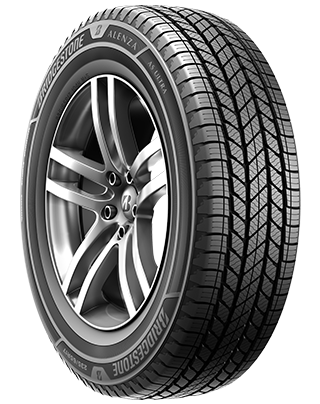
- No warranty
- All-Season
- Light Truck Tires
 Dueler H/T 684 II
Dueler H/T 684 II
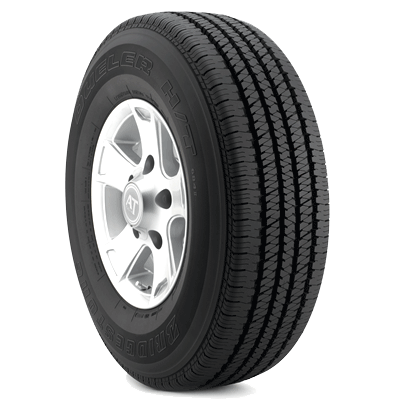
- Platinum Pact Limited Warranty
- All-Season
- Light Truck Tires
 Dueler A/T Revo 3
Dueler A/T Revo 3
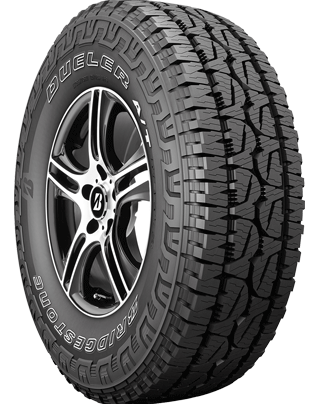
- Platinum Pact Limited Warranty
- All-Season
- Light Truck Tires
 Dueler H/T 685
Dueler H/T 685
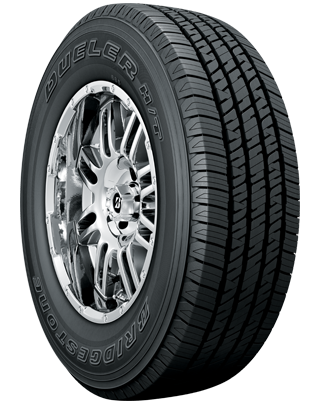
- No warranty
- All-Season
- Light Truck Tires
 WEATHERPEAK
WEATHERPEAK
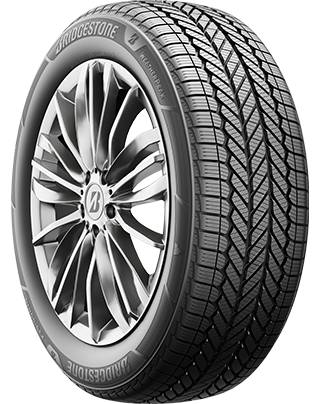
- Platinum Pact Limited Warranty
- All-Season
- Passenger Tires
 Blizzak DM-V2
Blizzak DM-V2
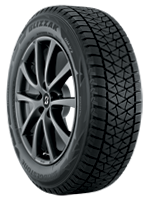
- No warranty
- Winter
- Winter
 DriveGuard Plus
DriveGuard Plus
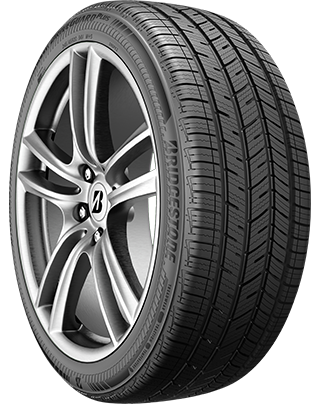
- Platinum Pact Limited Warranty
- All-Season
- Performance
 Dueler H/L Alenza
Dueler H/L Alenza
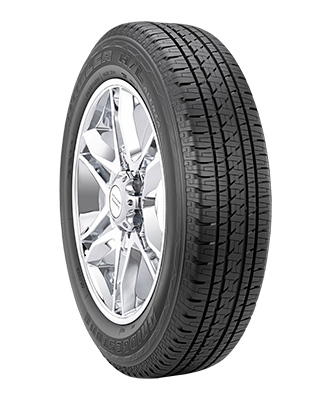
- Platinum Pact Limited Warranty
- All-Season
- Light Truck Tires
 Dueler H/L Alenza Plus
Dueler H/L Alenza Plus
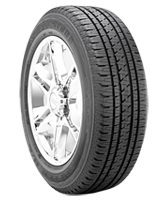
- Platinum Pact Limited Warranty
- All-Season
- Light Truck Tires
 Destination A/T2
Destination A/T2
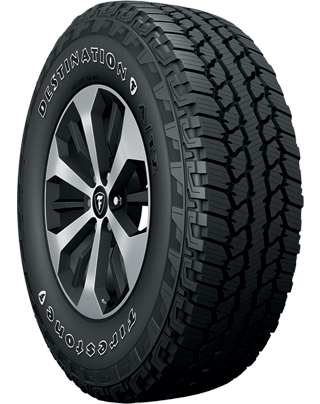
- Gold Pledge Limited Warranty
- All-Season
- Light Truck Tires
 Destination LE3
Destination LE3
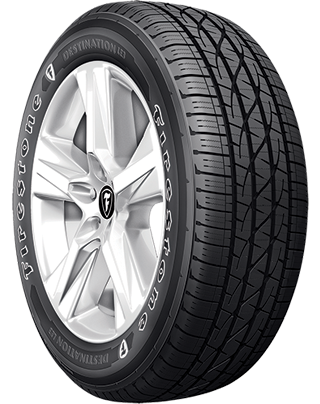
- No warranty
- All-Season
- Light Truck Tires
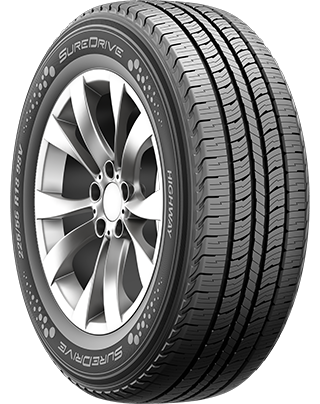
- No warranty
- All-Season
- Light Truck Tires
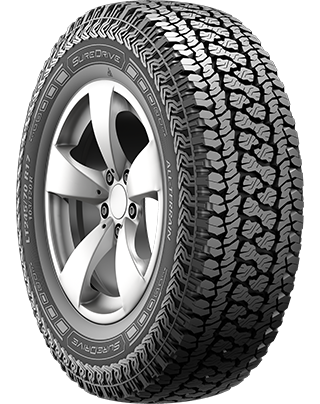
- No warranty
- All-Season
- Light Truck Tires
 OPEN COUNTRY R/T
OPEN COUNTRY R/T
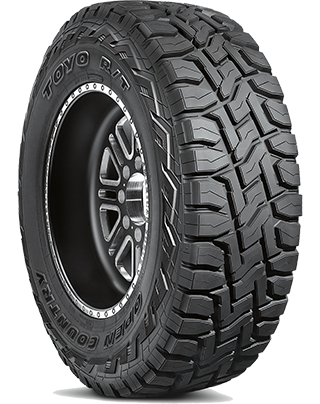
- No warranty
- All-Season
- Light Truck Tires
 PROXES ST III
PROXES ST III
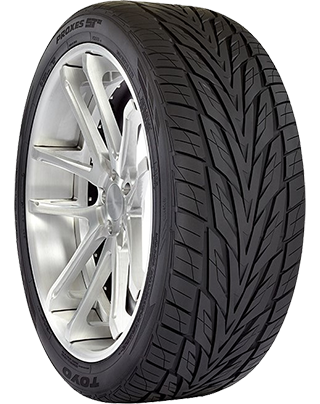
- No warranty
- All-Season
- Light Truck Tires
2013 Toyota Sequoia Tire Information
Beyond the correct tire size, there are a couple of other factors to consider when buying Toyota Sequoia tires like how and where you drive, and how much you want to spend. When evaluating your driving conditions, think about where you live (countryside vs. city vs. mountains) and the kind of unexpected weather you're likely to experience. Many drivers who live in states that experience all four seasons choose to purchase two sets of tires: one set for winter, one set for summer. Other drivers prefer to purchase one all-season set to limit trips to the tire shop and make sure their vehicle is prepared in the rain, sleet, snow, or sun!
Next, consider your driving style. If you're an avid off-roader who yearns to pioneer new paths, you have very different tire needs than a highway commuter who doesn't hit the hills very often. Talk to a tire technician at Firestone Complete Auto Care for help choosing the best tire for you, or start shopping for Toyota Sequoia tires online.
Installing Toyota Sequoia Tires
Firestone Complete Auto Care installs more tires on more cars than most other companies. We're a tire store that also offers professional tire installation, maintenance, and rotation, along with complete auto care. Shop 2013 Toyota Sequoia tires online and schedule an installation appointment.
2013 Toyota Sequoia Tire Q&A
-
Why check Toyota tire inflation? The right tire pressure can make all the difference. Proper tire inflation helps increase fuel economy, improve braking time, and boost tire lifespan! Even a small change in tire pressure can impact your driving.
-
Why are there numbers on the side of my Toyota Sequoia tires? The numbers on your tire sidewall give you information about tire speed rating, traction, treadwear, tire size, and load carrying capacity. Chat with a tire technician to learn how to read the numbers on your Toyota tires!
-
Is there an easy way to check Toyota tire tread depth? Stay on top of your tire tread depth to help avoid a dangerous drive. You can check tread depth with a penny. Hold the penny so that Abraham Lincoln is facing you, then place your penny into a tread groove upside down. If you can see the top of Abe’s head, your tread is shallow and it might be time for new Toyota Sequoia tires. Grab a penny. Hold the so that Abe Lincon's head is facing you and his hair is pointing toward the ground. Then, place the penny into a tread groove. If you can see the top of Abe’s head, your tread is shallow and it might be time for new Toyota Sequoia tires.
Repair Services for Your 2013 Toyota Sequoia
Want more details? Choose a service below to read more about Toyota Sequoia repairs at Firestone Complete Auto Care.
Get Repairs for Your 2013 Toyota Sequoia
No driver looks forward to car repairs. But at Firestone Complete Auto Care, we strive to give you the excellent repair experience you deserve. When you come to us for 2013 Toyota Sequoia repair services, our skilled repair technicians will get your Sequoia back on the road. We'll work to evaluate the scope of repairs needed and explain your options. We value your trust, so we recommend only the repairs we think are necessary for your safety on the road.
How Much Does Toyota Sequoia Repair Cost?
Several factors can affect the cost to repair your 2013 Toyota Sequoia, including the type of repair, prices of appropriate replacement parts, how much labor the repair will take, and where you live. No matter what state you’re in, be sure to look through our offers and online coupons for repairs.
A few different aspects can influence repair costs for your 2013 Toyota Sequoia, like
2013 Toyota Sequoia Auto Repair Q&A
-
Do I still need scheduled maintenance even when nothing is wrong with my Toyota? One of the best ways to prevent 2013 Toyota Sequoia repairs is by staying on top of your Toyota maintenance schedule. This schedule is written by the people who made your vehicle and they know best how to keep it running smoothly.
-
Should I bring my Toyota in even if I can't pinpoint the problem? No, we’re not talking about finding the best jams on the radio! You know your car best, and you’re the first person who will notice if something doesn’t feel right (like new smells, sights, or sounds coming from your car). If you sense that something is 'off,' stop in for a Courtesy Check to have these symptoms checked out ASAP. Early action could help you prevent Toyota Sequoia repairs.
-
Do I have to get the repairs you recommend for my Toyota? Trust is more than just a saying on the wall. It’s a window underneath it. That’s why we won’t recommend services or repairs for your 2013 Toyota Sequoia unless we think they’re vital to your safety on the road.
Brake Repair for Your 2013 Toyota Sequoia
Your Toyota Sequoia engine may be strong and reliable. But if you can’t stop it, it’s as good as scrap metal. If you notice your brakes are squeaking or not working well, don’t wait! Safe driving is difficult when your brakes are anything but their best. Plus, waiting can lead to more expensive parts wearing out and requiring replacement. Go to your local Firestone Complete Auto Care for 2013 Toyota Sequoia brake repairs. We offer many affordable brake repairs like pad/shoe replacement, brake rotor/drum machining, brake fluid exchange/bleeding, and wheel cylinder and brake caliper installation.
Answers to Your Sequoia Brakes Questions
-
What is causing my Sequoia to shake when I brake? Faulty brake calipers, worn brake pads or rotors, loose or worn suspension parts, and warped rotors can cause your Sequoia to shake during braking. If you’re experiencing odd brake behavior, schedule a free brake inspection at a nearby Firestone Complete Auto Care.
-
How long can I expect my Sequoia brake pads to last? You can usually get around 30,000 to 40,000 miles out of your brake pads, but how and where you drive your Sequoia can affect this. Hauling large loads or riding your brakes can shorten their lifespan, while smoothly braking and mostly sticking to highways can help your brake pads last longer.
-
Does brake fluid leak when the car is off? Your Sequoia brake system is a closed hydraulic system, so a brake fluid leak likely means you have an issue in your brake system. Over time, brake components can wear out or get damaged, causing a brake fluid leak.
2013 Toyota Sequoia Drivetrain Repairs
Drivetrains for front, rear, and all-wheel-drive and 4WD vehicles are quite different, so you don't want to go to just anyone for drivetrain repair. You want to come see the technicians at Firestone Complete Auto Care. We can help repair all of your 2013 Toyota Sequoia drivetrain components Your Toyota could be crying out for driveshaft repair if you notice resistance when turning, heavy vibrations in your floorboards, clunks when shifting, or vibration as your vehicle accelerates.
2013 Toyota Sequoia Drivetrain Questions
-
What are the symptoms of a damaged Toyota drivetrain system? Noises toward the back of your Toyota Sequoia, leaking fluid, trouble turning — these could all be signs of drivetrain damage you want to address. Take action before something more severe happens.
-
Why is my Sequoia malfunction indicator light (MIL) on? Engine problems, transmission problems, faulty sensors, electrical issues, misfire issues, and connector problems could all cause your Sequoia’s malfunction warning light, or better known as the check engine light, to illuminate.
-
How serious is a drivetrain malfunction in my Sequoia? A drivetrain malfunction in your Sequoia should never be taken lightly. Driving with a malfunctioning drivetrain can put you in danger and lead to further vehicle damage, so it's essential to have a qualified mechanic assess and repair the problem as soon as possible.
Wheel Alignment for 2013 Toyota Sequoia
An alignment involves making adjustments to your Toyota Sequoia's suspension system, which connects the wheels with the rest of the vehicle. During the service, your tire angles are adjusted according to measurements recommended by Toyota. Why? So that your tires can make contact with the road at the best possible angle. Before we adjust the alignment of your 2013 Toyota Sequoia, we’ll start by checking the current alignment angles. If needed, we'll adjust your wheel alignment angles to match Toyota recommendations.
Questions About Toyota Sequoia Alignment
-
What can knock my Toyota Sequoia out of alignment? Potholes and uneven roads can knock your car out of alignment, so stay aware of the road ahead and adjust your speed (or avoid these obstacles whenever it’s safely possible).
-
How frequently should you get a wheel alignment for your Sequoia? It’s usually suggested you check your alignment about every 6,000 miles or 6 months (whichever occurs first). Still, you should reference your Sequoia owner’s manual for Toyota's recommended interval.
-
Do you need an alignment with new Sequoia tires? It’s not mandatory to get an alignment after installing new tires on your Sequoia, but it can be a smart decision! Proper alignment from the jump can help improve handling, fuel efficiency, and tire wear.
2013 Toyota Sequoia Engine Repair
If your 2013 Toyota Sequoia needs engine repair, our technicians will provide you with a thorough explanation beforehand. We never do any work without your sign-off. If a repair can wait, we'll let you know. But if immediate repairs are necessary for your safety, we’ll make sure that's clear, too. We want to provide you with the information you need to make an informed engine repair decision. Choose Firestone Complete Auto Care for Toyota Sequoia engine repairs and you can feel good knowing that we only use Toyota-compliant replacement parts such as the serpentine belt, engine oil seal, sensors, or another part.
Engine Q&A 2013 Toyota Sequoia
-
Why does the check engine light come on when I start my Sequoia? It’s usually normal for your check engine light to turn on upon ignition. This is just your Sequoia testing its circuits. The dash light shouldn't stay on. If it does, you might want to bring your vehicle in for service.
-
Are Toyota Sequoia engine noises bad? Strange engine sounds can be a sign something’s off in your Toyota Sequoia. Knocking or tapping could be a symptom of low oil. A high-pitched whistle could signal an intake leak or misaligned belt. Squealing can be traced back to a loose fan belt, and grinding might be a sign of brake problems rather than engine issues.
-
What could damage my Toyota Sequoia engine? Some driving habits are not so great for your engine. These include driving on a near-empty gas tank, flooring the gas pedal while the car is in Park, or accelerating too quickly, too soon. Protect your engine’s performance and efficiency by distancing yourself from these habits.
Tire Repair for Your 2013 Toyota Sequoia
Firestone Complete Auto Care is here for you when your 2013 Toyota Sequoia needs flat tire repair or inspection. Our tire technicians can determine whether it's safe to plug and patch the tire, or whether it needs to be replaced. We'll start by evaluating the state of wear, the location of damage, type of damage, and the size of the damage.
If your 2013 Toyota Sequoia tire puncture can be repaired, we'll follow three basic steps to repair it: (1) Separate the tire from the vehicle wheel, (2) use a filler to close up the puncture (this is to keep moisture from getting in), and (3) secure and seal the inner tire liner to ensure the tire is airtight.
Your Questions About Toyota Sequoia Tire Repair, Answered
-
How soon should I have my flat tire repaired? A flat tire that’s not addressed can take a terrible toll on the rest of your car. Until you have it repaired or replaced, drive your Sequoia as little as possible to reduce your risk of damage to the wheels and alignment – or further damage to that already struggling tire!
-
Will a temporary sealant fix my Toyota's flat tire? Fast fixes are a mixed blessing. They’ll help you get your Toyota Sequoia to Firestone Complete Auto Care, but don’t count on them to keep you on the road for very long. Using a temporary sealant may also void a Bridgestone or Firestone tire warranty.
-
What can cause Sequoia tires to keep losing air? If your Sequoia tires are always losing air, you may have a puncture, damaged wheel, or leaking valve stem.
2013 Toyota Sequoia Maintenance
When it comes to your Toyota Sequoia, how you treat your car makes all the difference in its performance. With proactive maintenance, your Sequoia could be on the road well past the 200,000 mile mark.
2013 Toyota Sequoia Maintenance Schedule
What is the manufacturer recommended maintenance schedule for a 2013 Toyota Sequoia? Find maintenance info for your vehicle.
2013 Toyota Sequoia Maintenance Information
It can be overwhelming, but fortunately, there’s a resource that takes the guesswork out of routine Sequoia maintenance. Just follow your 2013 Toyota Sequoia maintenance schedule! This recommended maintenance schedule is written by the auto manufacturer, Toyota themselves. Scheduled maintenance services can vary depending on driving conditions, climate, and other factors; however, there’s a good chance that your vehicle’s recommended maintenance services will include oil changes, tire rotations, brake pad replacement, filter changes, and fluid checks and exchanges. Keeping up with routine service appointments is a great way to keep your Sequoia running for longer, keep you safer on the road, and maybe even save you the headache of dealing with common 2013 Toyota Sequoia problems in the future.
Essential Maintenance to Keep Your 2013 Toyota Sequoia Running Newer, Longer
Bring your 2013 Toyota Sequoia to Firestone Complete Auto Care for factory-recommended maintenance services and a skilled technician will start the appointment with a Courtesy Check. The Courtesy Check helps us see what we’re working with under the hood, and allows us to alert you to any potential problems before they worsen. During a Courtesy Check, we’ll always check your battery, then we’ll move on to inspect your Sequoia’s head and tail lights, tires, fluid levels, alignment, and windshield wipers.
Firestone Complete Auto Care is your spot for 2013 Toyota Sequoia maintenance. Don’t wait until something goes wrong with your car. Visit your nearest location for proactive maintenance today.
2013 Toyota Sequoia Maintenance Q&A
-
When should I have Toyota Sequoia alignment checked? You know your Toyota Sequoia better than anyone else, so you’ll know if something doesn’t feel right while driving. Have your alignment checked (and adjusted if necessary) as soon as you notice a pulling steering wheel to prevent suspension damage or uneven tire wear.
-
When should I use high mileage oil in my Toyota Sequoia? If your Toyota Sequoia has ticked past 75,000 miles, consider switching to high mileage oil at your next oil change to give your engine what it needs to go another 75,000 (or more!). High mileage oil: make it a high priority!
-
Can I ignore dashboard lights on my Toyota? Don't ignore dashboard warning lights! Bring your Toyota Sequoia in for a diagnostic code scan as soon as a dashboard warning light flashes on, whether it's your check engine or battery light. Dashboard lights alert you to trouble under the hood.
2013 Toyota Sequoia Battery Replacement & Size
Not sure what battery to get for your Toyota Sequoia?
| Battery | Engine | Warranty | Cold Cranking Amps | |
|---|---|---|---|---|
| 27F-3 | V8/5.7L | Replacement 24 months | Performance months | 710 |
| 24F-6 | V8/5.7L | Replacement 36 months | Performance months | 750 |
| 24F-RP | V8/5.7L | Replacement 48 months | Performance months | 750 |
2013 Toyota Sequoia Car Batteries
Generally, car batteries last from three to five years. Don’t get stranded by your Sequoia’s car battery. Replace it regularly instead! Look out for symptoms of a faulty car battery. A lagging starter, an illuminated check engine light or battery signal, bloated battery case, corrosion-covered posts, or dim headlights can all be signs that your battery is waving goodbye.
Plus, at Firestone Complete Auto Care, we’ll test your battery for free. Drop in for a free battery check and, if needed, a replacement battery for your 2013 Toyota Sequoia. Car batteries are only one of our many strong suits. Our technicians are well-acquainted with Toyota’s service specs for Sequoia battery cold cranking amps and reserve capacity. Get help identifying the type and size of battery that's best for your Sequoia, and schedule an appointment today for a quick car battery replacement.
Top Toyota SequoiaCar Battery Questions
-
Why doesn’t my Toyota Sequoia battery stay charged? A car battery that needs to be jump-started every time is as good as dead. It may be getting old. Or, you’ve been leaving the doors slightly open and the dome lights on during the night. Stop in for a free battery check at your nearest Firestone Complete Auto Care and learn more about your battery's charge.
-
How long do car batteries last? The typical 12-volt car battery may last three to five years, depending on the type of battery, the driving conditions, and how well the battery is maintained.
-
What is the white, crusty stuff around my Sequoia’s battery post? If you notice white, crusty stuff around the battery terminals of your Sequoia, it's likely corrosion. A chemical reaction between battery acid and the air can create a white, powdery substance that builds up over time on the terminals. This buildup can interfere with the electrical connection between the battery and your Sequoia’s electrical system, potentially leading to poor performance, difficulty starting, and other issues.
2013 Toyota Sequoia Oil Changes
Your 2013 Sequoia’s oil should be changed according to Toyota’s recommended oil change intervals. Your Sequoia may need an oil change right away if your check engine/oil change light is on, you hear knocking sounds coming from the engine, sense an oil smell in the cabin, or see an excess amount of vehicle exhaust. You might need an oil change more frequently than what’s recommended by Toyota if you regularly haul heavy loads, drive in dusty areas, go off-roading a lot, or go at low speeds on long distance trips.
Your local Firestone Complete Auto Care has the right 2013 Toyota Sequoia motor oil: either synthetic or conventional. Consult Toyota's recommendations to select the right 2013 Sequoia oil and talk with a teammate to learn more about our oil options: Quaker State® Advanced Durability™ conventional oil, Pennzoil® High Mileage Vehicle® motor oil, Pennzoil Platinum® Full Synthetic motor oil with PurePlus™ Technology, and Shell Rotella® heavy-duty engine oil. During an oil change, an auto technician will change your Sequoia’s oil, replace and recycle your used oil and filter, check all of your other filters, top-off important fluids, and perform a free inspection on the rest of your vehicle. Get professional engine care by making an oil change appointment for your Sequoia today.
2013 Toyota Sequoia Oil Change Questions
-
Why is my Toyota Sequoia oil light illuminated? Your Toyota Sequoia oil change reminder light may come on if you're overdue for an oil change. The oil pressure light will typically come on if the oil level in the engine is too low, the oil pump is failing, you have a clogged oil filter, or there's a faulty oil pressure sensor.
-
How hard is it to change Toyota Sequoia oil at home? Changing engine oil at home isn’t as simple as it’s made out to be. You’ll have to figure out how to properly dispose of the oil and buy special tools. Having your oil changed professionally can not only reduce the risk of something going wrong during the service, but it’ll also help your car perform smoothly down the road.
-
Why is my Toyota exhaust smoke gray or blue? Your engine could be burning oil due to a leak. It may be time for a pro to take a look. A leak can be caused by a variety of issues including faulty valve seals, blown piston rings, or damaged cylinder walls.
2013 Toyota Sequoia Tune-Up & Engine Service
Routine engine tune-ups can bring power back to your Sequoia. Your local Firestone Complete Auto Care offers a range of engine tune-up services for your 2013 Toyota Sequoia. The first is the standard Firestone Tune-Up. The standard Firestone Tune-Up includes new spark plugs (and installation!), a thorough inspection of engine components, and a lifetime parts warranty*. A second service option replaces the air and fuel filter in your Sequoia. The third tune-up option is a fuel system cleaning service, which is a three-step process that removes varnish, dirt, and carbon deposits on your Sequoia's fuel injectors, throttle body, and throttle plate. This goes a long way in boosting your fuel system’s overall performance. Here’s something to remember when choosing services: the mileage and service history of your Sequoia can determine what kind of service it needs. Ask one of our technicians what your vehicle needs, based on your driving habits and your car’s current condition.
*Talk to a Firestone Complete Auto Care teammate for full terms and conditions on warranties.
Questions About 2013 Toyota Sequoia Engine Tune-Ups
-
What happens if my Toyota Sequoia spark plugs fail? When it’s time to replace the spark plugs, don’t delay. These small (but vital!) parts provide the electric spark that your car needs in order to start, and old spark plugs can prevent your car from starting at all. Replace spark plugs on time or about every 30,000 miles or so.
-
What does a puddle underneath my Toyota Sequoia mean? Don't ignore puddles of fluid under your Toyota Sequoia. It could signal a coolant leak, brake fluid leak, or an oil leak. Let any one of these leaks linger and it could cause engine damage.
-
How often should I clean my Toyota Sequoia fuel injectors? The cleaning schedule for vehicle fuel injectors varies depending on your driving conditions and the type of fuel you use. Some manufacturers suggest cleaning your fuel system as part of routine maintenance, while others will recommend it on an as-needed basis if you’re experiencing poor performance. Reference your Toyota owner’s manual for exact guidelines.
2013 Toyota Sequoia Suspension Service & Repair
When you first drove your 2013 Toyota Sequoia, the ride was probably so smooth that you didn’t even think about it! But these days, things are starting to feel a bit rough. Maybe your Sequoia bounces, sways to one side, or makes noise whenever you turn or drive over a speed bump. The first sign of problems is a good time to bring your 2013 Toyota Sequoia in for steering and suspension services. We’ll get to the root of the issue and, if your Sequoia suspension system needs repair, we’ll explain what your car needs and how much it’ll cost to get it done. We won't begin any work without your permission.
2013 Sequoia Steering & Suspension Q&A
-
What can cause my Toyota Sequoia to have a bouncy ride? Damaged struts or shocks can't dampen road bumps properly, causing your vehicle to feel like a trampoline after each dip or bump.
-
Why does my Sequoia tilt forward when I hit the brakes? The forward dip in the front end of your Sequoia when you brake is caused by the weight and momentum transferring to the front wheels. If your suspension system is in bad shape, it can fail to distribute this force, leading your front end to dip further downward.
-
Does tire pressure and tread depth impact my Toyota's suspension? Proper tire care can reduce strain on the suspension system, and also alert you to the need for new tires. Uneven tire wear is one sign of steering and suspension system problems, but it can also contribute to more.
A/C Service for Your 2013 Toyota Sequoia
Our trained technicians will do what they can to solve your 2013 Toyota Sequoia A/C problems. In this A/C performance inspection, we’ll check out the current condition of your 2013 Toyota Sequoia A/C system to evaluate what repairs are necessary (if any). This check will include an examination of system pressure, a visual inspection, and a leak test.
Let's say we repair your 2013 Toyota Sequoia A/C system. We will also perform an A/C evacuation and recharge. During this process, a technician will remove the old refrigerant from the A/C system. Then, they’ll use Toyota’s specifications to evacuate the system. The A/C system is recharged with new refrigerant.
Frequently Asked Questions for 2013 Toyota Sequoia A/C Systems
-
What’s making my Sequoia A/C put out warm air? If your car’s air conditioning isn’t blowing cold air at all (or it tries, then turns warm), you could have a clogged expansion valve, a faulty compressor clutch, a leak, or a malfunctioning fuse in the system.
-
What can cause an A/C system leak? To put it simply, age and moisture are some of the main causes of leaks in your A/C. Over time, rubber gaskets and seals can wear out, which pushes much-needed refrigerant out of your Sequoia’s A/C system — and lets outside moisture get in, which can take a toll on internal A/C components.
-
Why won’t my Sequoia’s A/C cool the vehicle when the car is stopped? If your A/C only works when the vehicle is moving, there could be a problem with part of your Sequoia’s A/C or electrical system. Potential issues include low coolant or a faulty cooling fan.
2013 Toyota Sequoia Transmission Service & Repairs
The transmission delivers power from the motor to your wheels so that you can drive at your desired speed. Since the transmission has to translate the precise amount of power for your desired amount of speed, a small transmission issue can put a big dent in your Sequoia’s performance. 2013 Toyota Sequoia transmission problems can show up as shifting delays, grinding or jumping during acceleration, the car shaking on the road, or a burning smell or whistling sounds coming from under the hood. If you ignore Toyota Sequoia transmission issues you might notice your fuel economy decrease or find that your Sequoia isn’t working at all. Our expert techs are familiar with 2013 Sequoia services and perform them according to Toyota-recommended specifications. As soon as you suspect something’s wrong with your Sequoia’s transmission, book an appointment at your local Firestone Complete Auto Care to help diagnose, treat, and prevent major transmission issues.
2013 Toyota Sequoia Transmission Q&A
-
Does my Sequoia's transmission fluid need to be inspected? Maintaining your Toyota Sequoia transmission fluid is one of the best ways to maintain your transmission's health. A general rule of thumb is to have your transmission fluid checked and changed about every 30,000 to 60,000 miles, but that timeline can change if you're hard on your Toyota. Leaks or low transmission fluid are easy to spot and affordable to repair.
-
Can transmission fluid leak from my Toyota Sequoia? Over time, transmission fluid can leak from your Toyota Sequoia, potentially causing transmission problems. A transmission fluid leak may be caused by a damaged transmission pan, faulty transmission cooler lines, worn-out seals, a cracked transmission housing, or an overfilled transmission.
-
Is it okay to drive a Sequoia with a transmission fluid leak? Driving your Sequoia with a transmission fluid leak is highly discouraged. Transmission fluid is vital to the smooth operation of your transmission system, and a leak can put the entire system at risk. A transmission fluid leak may lead to decreased performance, overheating, and possibly even transmission failure.
2013 Toyota Sequoia Inspections
When you bring your vehicle to Firestone Complete Auto Care for any service, we’ll automatically do a multi-point Courtesy Check. First, a technician will pop the hood on your Toyota Sequoia and test the battery to see how much charge it has left – and determine if it may fail in the near future. After we’ve inspected your Toyota Sequoia’s battery, we’ll visually inspect your lights, windshield wipers, filters, alignment, tires, hoses, belts and fluid levels.
While every visit to your local Firestone Complete Auto Care includes a Courtesy Check, you can also request a Complete Vehicle Inspection for your 2013 Toyota Sequoia if you suspect there may be a bigger problem. During a Complete Vehicle Inspection, we’ll visually check everything that’s on the list for a Courtesy Check. Additionally, we’ll perform a thorough manual inspection of your exhaust system, steering and suspension, and brakes. The goal of this type of inspection is to unearth significant issues that might need immediate attention in order to prevent further damage.
In some cities or states, you may be able to take care of your state inspection or safety test at your local Firestone Complete Auto Care. Inspections are performed on a state-by-state basis and requirements vary.
2013 Toyota Sequoia Vehicle Inspection Q and A
-
How do I know if my Toyota Sequoia needs a check-up? If you’ve noticed something that doesn’t feel quite right in your car lately, a Courtesy Check could give you peace of mind. We can help you get to the bottom of strange engine noises, a jerky steering wheel, or an engine that's hard to start.
-
Help! My 2013 Toyota Sequoia failed the state inspection test. Can you get it to pass? There's a good chance we can. Stop by for a full system inspection and we'll get to the root of the issue.
-
When is the best time to get a complete vehicle inspection for my Toyota Sequoia? The best time to have a complete vehicle inspection done on your Toyota Sequoia is when you notice something is off but you can’t locate the issue yourself. Schedule an inspection if you experience any unusual symptoms, such as unfamiliar dashboard indicators, strange engine noises, or steering changes. An inspection can be especially beneficial before a road trip for the simple peace of mind. You can feel confident in your adventure!
2013 Toyota Sequoia Radiator Repair & Service
Keeping up with regular radiator maintenance in your 2013 Toyota Sequoia is a huge factor in the longevity of your engine. To keep your radiator functioning, Toyota recommends replacing your antifreeze or coolant at scheduled intervals but it’s also wise to keep an eye out for signs of a failing radiator. You might be driving around (or about to be stranded) with a failing radiator if you notice a low coolant light or higher-than-normal engine temperatures on your dashboard, or if you spot coolant leaks coming from your car.
If you bring your vehicle to Firestone Complete Auto Care, we start with a comprehensive inspection of your Toyota Sequoia’s cooling system. We then do a machine-powered radiator exchange, replenish flushed chemicals, sealants, and lubricants, and then pressure check for leaks. If you’re about to lose your cool over a too-hot engine, rest assured that we’ll take excellent care of your 2013 Toyota Sequoia at Firestone Complete Auto Care.
Questions About Toyota Sequoia Radiators
-
What does an illuminated coolant temperature light mean for my Toyota? Pay attention to the temperature gauge and lights on your dashboard. If a low coolant warning light comes on or your dashboard temperature gauge keeps rising, it’s likely that your engine is about to overheat (and could leave you stranded on the road). Wait for the engine to cool down, then have your coolant system checked immediately at your nearest Firestone Complete Auto Care.
-
Why is my Sequoia overheating? One of the main reasons your Toyota Sequoia engine might overheat is because you don’t have enough coolant. Other causes include a clogged radiator, a damaged cooling fan, a malfunctioning thermostat, or a faulty water pump.
-
My Sequoia radiator sounds like it's rumbling or boiling! What's up? Air pockets in your Sequoia’s cooling system may cause a rumbling or boiling noise. You could also have a clogged radiator or simply need to replace the radiator cap.